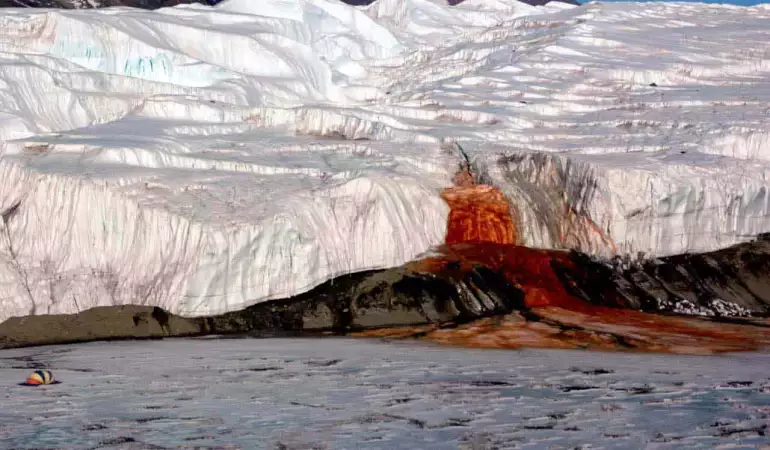Antarctica's "Blood Falls": what's behind this mysterious phenomenon?
Antarctica is one of the least explored places on Earth. It has long been a source of curiosity and attraction for adventurers. Even today, scientists continue to marvel at the wonders that lie beneath its icy expanse. One of the most spectacular phenomena on this frozen continent is Blood Falls.
February 05, 2025 06:56
Discovered more than 110 years ago
The Blood Falls is a red waterfall flowing from the Taylor Glacier into Lake Bonny West.
The bright red water stands out against the white landscape and has amazed scientists and travellers ever since its discovery in 1911, when it was first described by geologist Thomas Griffith Taylor.
T. G. Taylor gave his name to both the glacier where he discovered the gushing red water and the Taylor Valley into which the glacier flows.
Water does not freeze at incredibly low temperatures
One thing that puzzled scientists was the temperature of the area. It is almost -19°C. So the fact that the water was flowing instead of freezing solid was unexpected.
In 2017, a team of researchers using special ground-penetrating radar found that under the glacier lies a network of crevasses and tunnels that feed the waterfall's reservoir of salt water.
The salt content of this flowing water was found to be twice as high as that of the surrounding sea water.
The high salt concentration raises the freezing point of the water, so that it remains liquid even at extremely low temperatures.
The secret of the colour of the blood waterfall
For a long time, scientists have been trying to find out what causes the bright red colour of Blood Falls.
This colour is usually caused by the decay of iron-bearing minerals such as magnetite, goethite or haematite.
But studies in the 1960s showed that too few of these minerals were found in the water of the Taylor Glacier to explain it.
Another theory suggested that red ice algae could have caused the colour, but their existence has not been confirmed.
Researchers from the University of Alaska Fairbanks and Colorado College of Science have helped solve this mystery by using advanced analytical techniques.
In 2023, they examined waterfall water and soil samples using a transmission electron microscope (TEM), which allows them to observe objects at a scale up to 2 million times larger.
The scientists discovered nanometre-sized spheres floating in the water. These nanoparticles turned out to be made of iron, silicon, calcium, aluminium, sodium and other elements. They had previously gone unnoticed because they do not have a crystalline structure.
The study shows that the colour of the waterfall is not due to free iron atoms or minerals, as previously thought, but to the iron in the nanoparticles.
When the meltwater comes into contact with air, the iron is oxidised to form iron oxides and hydroxides.
In addition, high salinity and elements such as chlorine, magnesium and sodium contribute to the formation of yellow-orange iron compounds, giving the waterfall an even more spectacular, almost surreal appearance.




